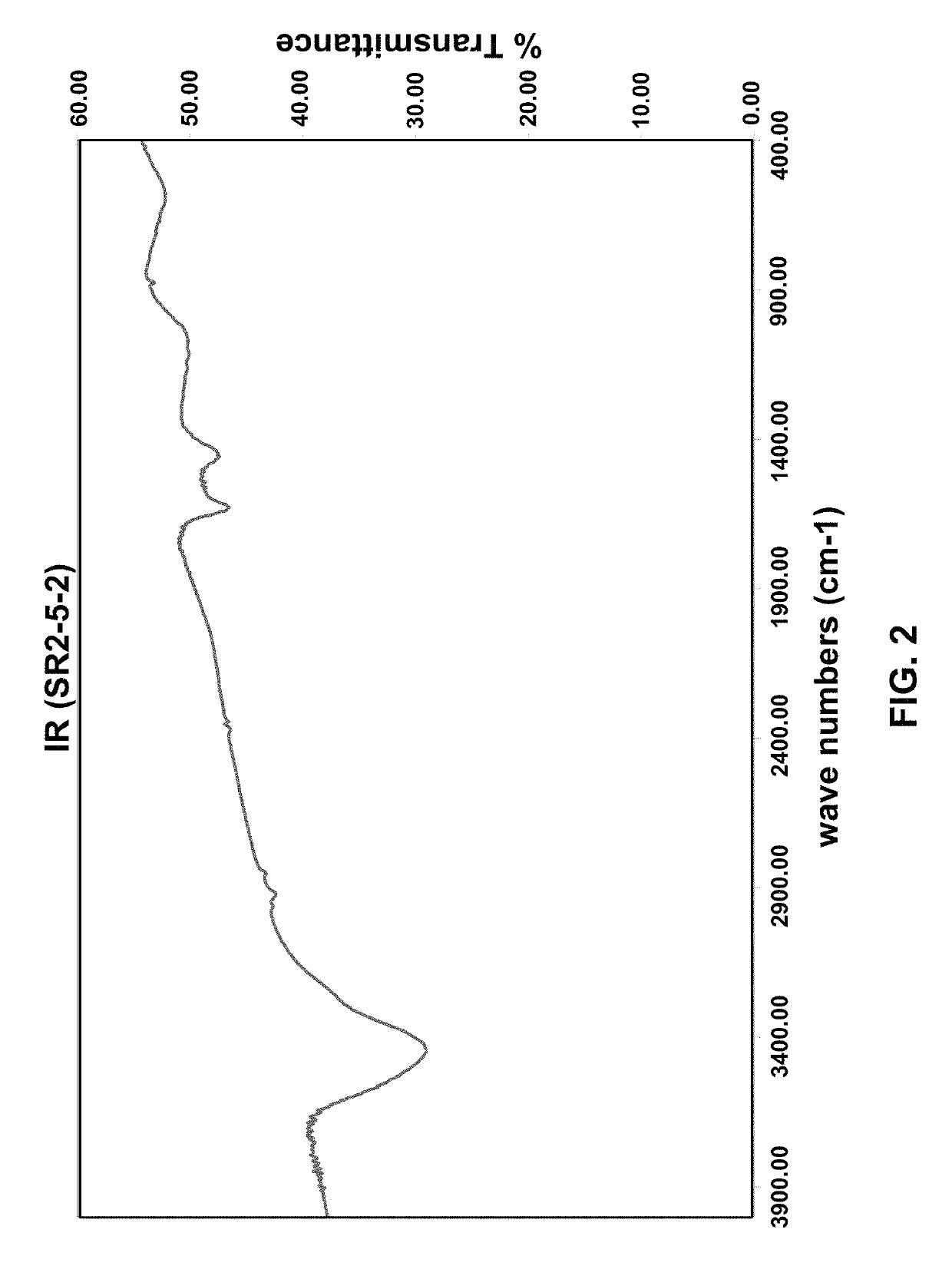Doped-carbon composites, synthesizing methods and applications of the same
a technology of doped carbon composites and composite materials, applied in the field of carbon materials, can solve the problems of low efficiency of degradation, inability to manufacture these materials, and metal instability in different oxidation states, and achieve the effects of high visible light absorption, high efficiency, and stability and ease of synthesis
- Summary
- Abstract
- Description
- Claims
- Application Information
AI Technical Summary
Benefits of technology
Problems solved by technology
Method used
Image
Examples
experiment 1
Microwave Assisted Synthesis of Photoactive Phosphorus (P) and Nitrogen (N) Doped Carbon
[0085]About 1.62 g of tannin and about 1.26 g of melamine were dissolved in about 50 mL of water with a few drops of methanol for added solubility, thereby, forming a mixture thereof. The mixture was heated until the solutes dissolved and the heating was continued until all the water evaporated from the evaporating dish. The resulting dry solid was scraped, which weighed about 2.45 g. Then, about 1 g of the powdered sample was placed in an alumina crucible with about 4 drops of phosphoric acid and covered with another boron nitride crucible and placed in a microwave oven operating at about 1.08 kW under ambient conditions for about 10 minutes. The sample was left for about 15 minutes to cool and a dark material was obtained and weighed (at about 0.438 g). The resulted material appeared dark green under an optical microscope and was electrically conductive when the leads of a multimeter were used ...
experiment 2
Synthesis of the Photoactive Phosphorus (P) and Nitrogen (N) Doped Material
[0086]About 1.62 g of tannin and about 1.26 g of melamine were dissolved in about 50 mL of water with a few drops of methanol for added solubility, thereby, forming a mixture thereof. The mixture was heated until the solutes dissolved and the heating was continued until all the water evaporated from the evaporating dish. The resulting dry solid was scraped, which weighed about 2.45 g. The dry powdered sample was placed in an alumina crucible and covered with an alumina lid and placed in a muffle furnace at about 900° C. for about 2 hours under ambient conditions. Following the 2 hour period, the muffle furnace was turned off and the exhaust hole on the top was covered with a petridish. Cooling was allowed to take place for several hours after which the furnace was opened and the dark material was obtained and weighed (at about 0.147 g). The obtained material appeared dark green under an optical microscope and...
experiment 3
Synthesis of Phosphorus (P) and Silicon (Si) Doped Carbon
[0087]An about 0.6 g sample of silicone oil (Pure Silicone Fluid, 500 cSt, from Clearco Products Co., Inc., Bensalem, Pa.) was mixed with about 0.62 g of polyphosphoric acid in a born nitride crucible to form a mixture. Further, about 2 g of tannin was added to the mixture and mixed well to make a slurry. The crucible was lightly covered with another boron nitride crucible and placed in an alumina foam box covered on all sides. This setup was placed in a microwave oven operating at about 2.45 GHz at about 1.25 KW power and irradiated for about 30 minutes. The crucible was taken out of the microwave oven after cooling for about an hour and a half. A highly conductive black material that weighed about 0.923 g was obtained.
PUM
| Property | Measurement | Unit |
|---|---|---|
| temperature | aaaaa | aaaaa |
| time | aaaaa | aaaaa |
| frequency | aaaaa | aaaaa |
Abstract
Description
Claims
Application Information
 Login to View More
Login to View More - R&D
- Intellectual Property
- Life Sciences
- Materials
- Tech Scout
- Unparalleled Data Quality
- Higher Quality Content
- 60% Fewer Hallucinations
Browse by: Latest US Patents, China's latest patents, Technical Efficacy Thesaurus, Application Domain, Technology Topic, Popular Technical Reports.
© 2025 PatSnap. All rights reserved.Legal|Privacy policy|Modern Slavery Act Transparency Statement|Sitemap|About US| Contact US: help@patsnap.com



